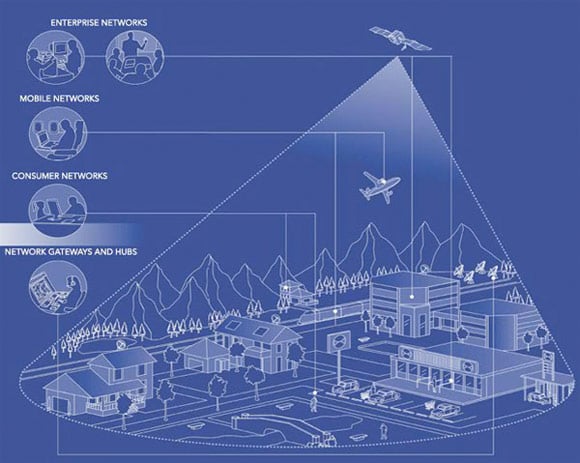New ViaSat Deal Could Brings 12Mbps Service To Rural Users Soon
Satellite Internet has been a godsend for rural residents for years, but one complaint never dies down: horrible upload rates. ViaSat has been plugging away at improving that for some time now, and a new deal will reportedly bring "affordable" 12Mbps service to market within a couple of weeks. To residents using existing satellite services, this probably sounds like a dream come true. The new five-year wholesale distribution agreement with the National Rural Telecommunications Cooperative (NRTC) will enable next-generation satellite broadband service through the new ViaSat-1 satellite. Similar to retail offerings, the agreement will allow NRTC members to experience the new 12 Mbps service packages. Outside ViaSat-1 coverage areas, NRTC will introduce enhanced 5 Mbps service through a new network of next-generation gateways and consumer terminals.
"NRTC's electric and telephone members were the first distributors of WildBlue service, and they remain committed to ensuring that rural Americans have access to robust broadband," said Tim Bryan, NRTC CEO. "The enhanced satellite broadband service will make significant contributions to the communities we serve, so we are very happy to continue our relationship with ViaSat and offer the new service." ViaSat-1, providing more capacity than all other communication satellites over the U.S. combined, is designed to transform the economics and quality of service that satellite broadband can provide. The technology is expected to elevate satellite into a much more competitive position in the broadband service marketplace, offering a faster Internet service starting at $50.

"This longstanding partnership with NRTC has continuously served a very important group of our customers with a level of quality that is consistent with our goals," said Tom Moore, ViaSat senior VP. "Our new technology will bring NRTC customers the true broadband experience they need."
The 140 Gbps capacity ViaSat-1 satellite is scheduled to enter service this month and then services will sequentially expand across the United States over the following months. Until rural broadband amounts to anything, at least rural residents can look forward to this.
"NRTC's electric and telephone members were the first distributors of WildBlue service, and they remain committed to ensuring that rural Americans have access to robust broadband," said Tim Bryan, NRTC CEO. "The enhanced satellite broadband service will make significant contributions to the communities we serve, so we are very happy to continue our relationship with ViaSat and offer the new service." ViaSat-1, providing more capacity than all other communication satellites over the U.S. combined, is designed to transform the economics and quality of service that satellite broadband can provide. The technology is expected to elevate satellite into a much more competitive position in the broadband service marketplace, offering a faster Internet service starting at $50.

"This longstanding partnership with NRTC has continuously served a very important group of our customers with a level of quality that is consistent with our goals," said Tom Moore, ViaSat senior VP. "Our new technology will bring NRTC customers the true broadband experience they need."
The 140 Gbps capacity ViaSat-1 satellite is scheduled to enter service this month and then services will sequentially expand across the United States over the following months. Until rural broadband amounts to anything, at least rural residents can look forward to this.

